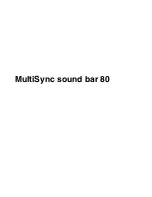
18
NOTE:
WHEN USING SELF-SHIELDING FLUX-CORE WIRE it is very important to thoroughly chip and brush the slag off
each completed weld bead before making another pass or the next pass will be of poor quality.
Fillet Weld Joints.
Most fillet weld joints, on metals of moderate to heavy thickness, will require multiple pass
welds to produce strong joint. The illustrations in Figure 19 show the sequence of laying multiple pass beads into a
T fillet joint and a lap fillet joint.
6.5 Spot welding
There are three methods of spot welding: Burn-Through, Punch and Fill, and Lap. Each has advantages and
disadvantages depending on the specific application as well as personal preference.
1. The BURN-THROUGH METHOD welds two overlapped pieces of metal together by burning through the top
piece and into the bottom piece. With the burn-through method, larger wire diameters tend to work better than
smaller diameters. Wire diameters that tend to work best, with the burn-through method are .035 inch self-shielding
flux-core wire. Do not use .030 inch self-shielding flux core wires when using the burn-through method unless the
metal is VERY thin or excessive filler metal build-up and minimal penetration is acceptable. Always select the
HIGH heat setting with the burn-through method and tune in the wire speed prior to making a spot weld.
2. The PUNCH AND FILL METHOD produces a weld with the most finished appearance of the three spot
weld methods. In this method, a hole is punched or drilled into the top piece of metal and the arc is directed
through the hole to penetrate into the bottom piece. The puddle is allowed to fill up the hole leaving a spot weld that
is smooth and flush with the surface of the top piece. Select the wire diameter, heat setting, and tune in the wire
speed as if you were welding the same thickness material with a continuous bead.
Содержание HIT140
Страница 5: ...5 Assembly B FOR GASLESS WELDING ...
Страница 6: ...6 C FOR GAS WELDING D FOR MMA WELDING ...
Страница 21: ...21 ...
Страница 22: ...22 ...





































